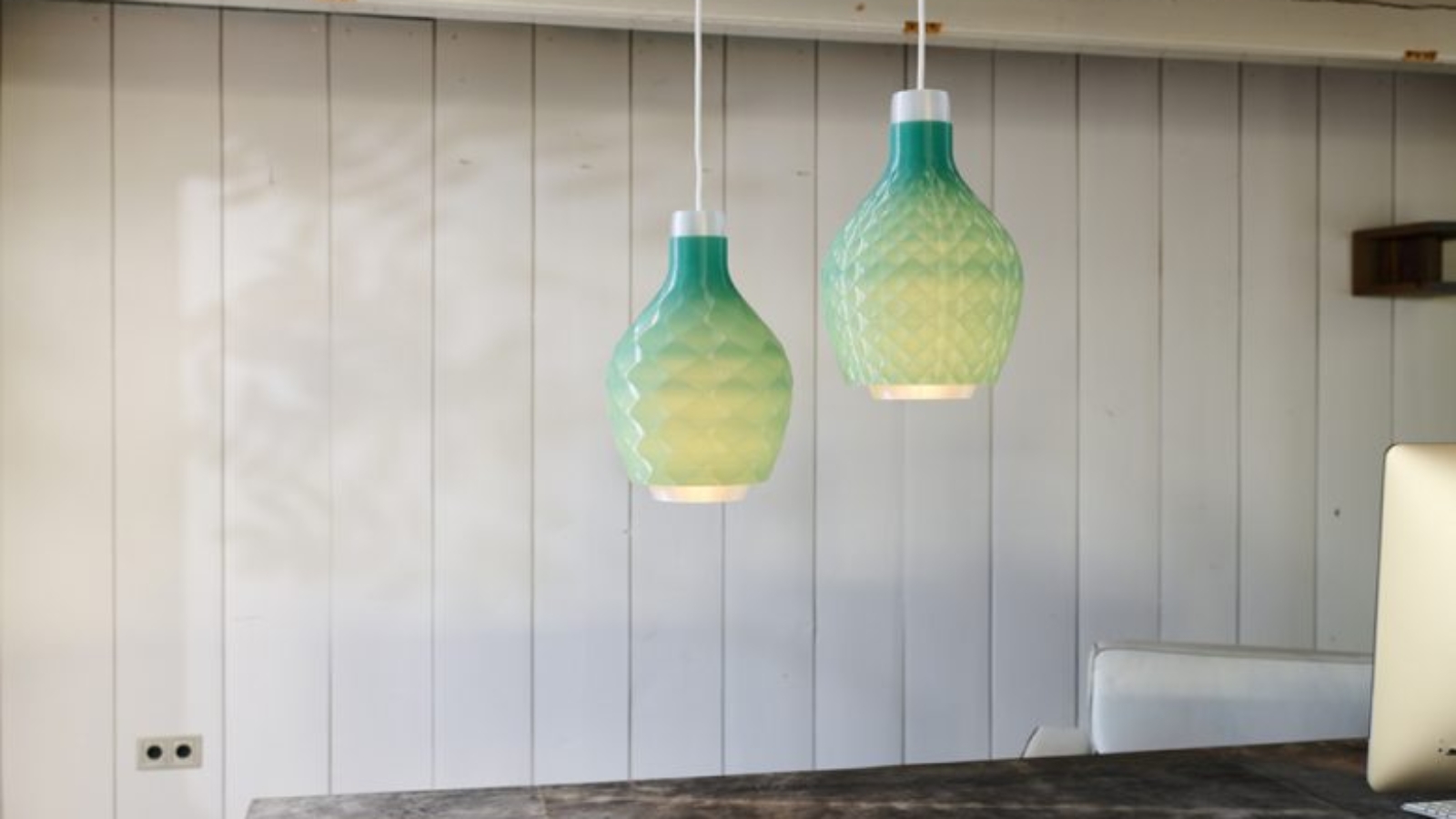Signify, previously known as Philips Lighting, and Philips MyCreation have used recycled fishing net filament, made by Fishy Filaments, in Cornwall, UK, to 3D print lamps – known as the Philips MyCreation Dropli Fishnet Lamps.
According to The Chicago Athenaeum: Museum of Architecture and Design, the goal was to create a lamp that was sustainable in multiple ways, including being 3D printed from recycled fishing nets – reducing ocean waste, reducing transportation by printing and assembling in local hubs in North America, Europe, and Asia, making the lamps on-demand – eliminating overproduction, and using local manufacturing to improve skill development and employment in the region.

“In pursuit of sustainable products, Signify has been focused on leveraging 3D printing in small regional printing hubs catering to our customers on-demand. In doing so we have found new design freedom, become more flexible in our source materials, and prevented over-production for a circular future,” said a post by Signify on the Dutch Design Week website. “Our lights are crafted by an international team of designers who seek inspiration from diverse cultures, movements, and trends. By working in tandem with our 3D printers, they have the freedom of continuous experimentation, thanks to an agile creative process. This results in remarkable lighting that adds style to any room – even with the lights off.”
Honoring the purposeful origin of the source material, as well as the ocean itself, these lamps have a coastal-inspired surface finish that comes to life in textures (made possible thanks to 3D printing) and colors that bring the feeling of the ocean to your home.
Manufacturing on Demand

“Nets are the main tools used by fishermen to earn a living, but fishing nets waste is a genuine problem here in Cornwall due to the lack of a proper recycling infrastructure. Around the world, most of the fishing nets were burned, put in landfill, or worst of all, dumped into the sea, causing massive environmental problems,” said Ian Falconer, founder of Fishy Filaments Ltd.
The organic silhouette with the diffuser creates soft and soothing light and highlights the texture of the shade. The range includes different textures resembling sand dunes, the natural flow of water, scales, and nets. The 3D textures were developed by designers working closely with 3D-printing machines – exploring the possibilities of digital craftsmanship. The luminaire uses a standard E27 fitting that is easy to fit with an energy-saving LED bulb or smart light.
“3D printing completely changes the way we design new products. It’s much closer to craftsmanship. In a very iterative process, together with the machine, we created code and new textures and we wanted to reflect those new textures in the product,” said the same post on the Dutch Design Week website. “We are taking 3D printing to a new level by pioneering a new design craftsmanship where the beauty of printed forms, textures, and materials are expressed while solving the technical challenges of a sustainability supply chain in a commercially viable way. We are constantly driven by the challenge to create value in a product with its material origin in a waste stream.”
You might also like:
The mycusini 2.0 enables bespoke 3D printed chocolate-making:
* This article is reprinted from 3D Printing Media Network. If you are involved in infringement, please contact us to delete it.
Author: Edward Wakefield


Leave A Comment